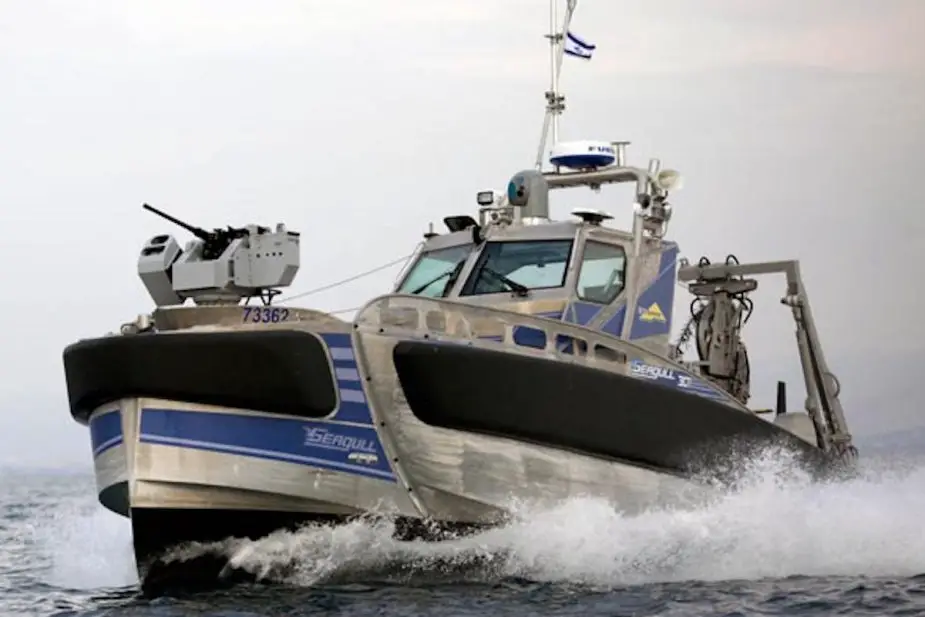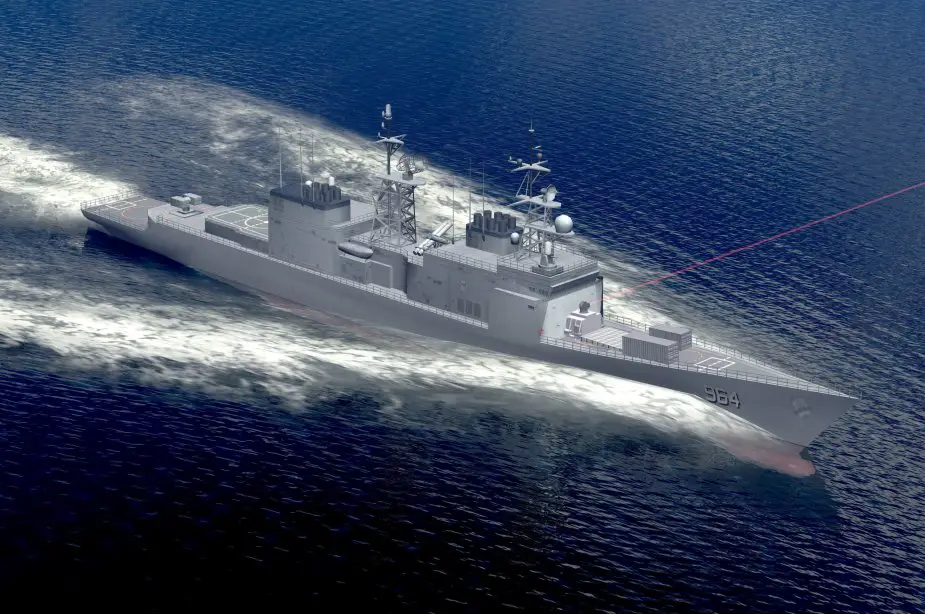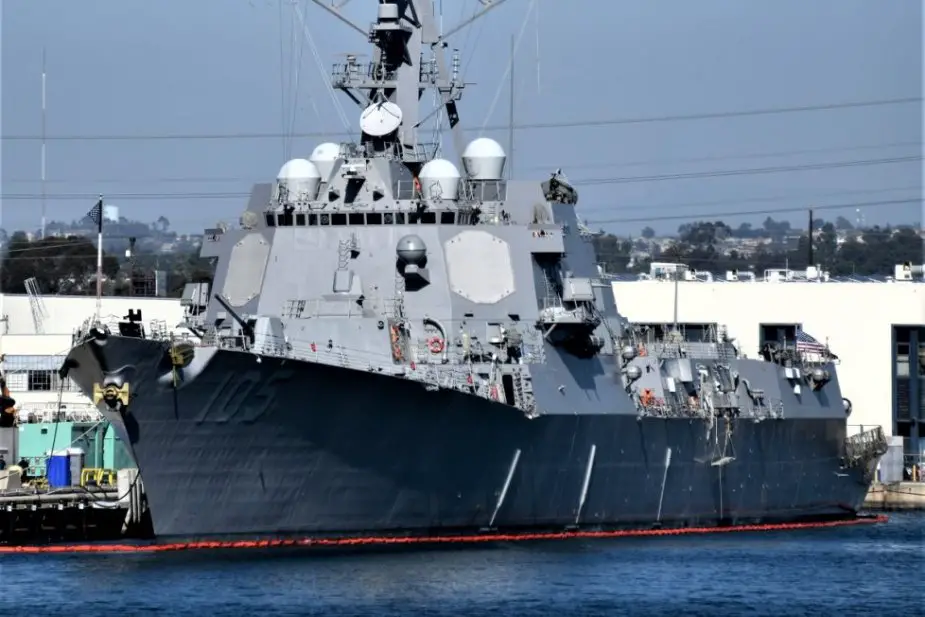Analysis: Top naval laser weapons systems - take 2
The concept of using high-energy and directed lasers for naval military applications is gathering pace among the world’s superpowers. If successfully developed and deployed, laser weapon systems might be regarded as a “game-changer” for defending Navy surface ships against enemy missiles and UAVs.
Follow Navy Recognition on Google News at this link
 Seagull Unmanned Surface Vessel with Elbit’s Elop maritime laser. (Picture source: Elbit)
Seagull Unmanned Surface Vessel with Elbit’s Elop maritime laser. (Picture source: Elbit)
Elbit’s Elop maritime laser:
Elbit developed its advanced navy laser weapon systems following a merger with Electro-optics. It can identify the range of a target at high repetition rates, which is critical for enhancing the efficiency of naval weapons systems. Elop’s eye-safe high repetition range-finders can be added to existing systems in a cost-efficient manner, or be added to new systems. To achieve a high repetition rate, the naval compact integrated laser uses diode-pumped solid-state laser technology.
 Northrop Grumman will assist the Navy in testing a 150 kW-class Laser Weapon System Demonstrator aboard the service's Self Defense Test Ship, the former USS Paul F. Foster (DD-964). (Picture source: Northrop Grumman)
Northrop Grumman will assist the Navy in testing a 150 kW-class Laser Weapon System Demonstrator aboard the service's Self Defense Test Ship, the former USS Paul F. Foster (DD-964). (Picture source: Northrop Grumman)
Northrop Grumman MK2 MOD0 LWSD:
The MK 2 MOD 0, is also known as the Solid-State Laser—Technology Maturation Laser Weapon System Demonstrator. The LWSD is likely the most powerful and destructive laser to go to sea. The LWSD was developed by the Office of Naval Research and Northrop Grumman and fitted to the amphibious transport dock USS Portland. LWSD has an output of 150 kilowatts, making it up to five times more powerful than other Navy lasers. LWSD's operational employment on a Pacific Fleet ship is the first system-level implementation of a high-energy class solid-state laser. The laser system was developed by Northrop Grumman, with full System and Ship Integration and Testing led by NSWC Dahlgren and Port Hueneme.
 The complex of Russian laser weapons "Peresvet". (Picture source: Russian Research and Development)
The complex of Russian laser weapons "Peresvet". (Picture source: Russian Research and Development)
Russian Research and Development's Peresvet:
The following one is The Peresvet, also known as Russian Mobile Laser Weapon, is a new high energy laser weapon system unveiled by President Putin on March 1, 2018. The laser weapon system was already operational within the Russian Army but has not received an official designation yet. The most likely use of this weapon is to counter unmanned air vehicles, cruise missiles and other low-speed aircraft flying at low altitude. The laser beam is generated at the end of the carrier vehicle which features a sort of steerable laser cannon. In July 2018 the new details emerged about the Peresvet purpose which may consist on blinding electro-optical sensors onboard surveillance Low Earth Orbit (LEO) satellites and unmanned aircraft. The Peresvet is being deployed on Intercontinental Ballistic Missiles (ICBM) within Russian territory. In the event of an ICBM launch, the laser system might be employed to blind space-based assets from registering the launch. Besides, the system can be employed to engage the guidance system of several types of missiles that are based upon image matching to identify their targets.
 U.S. Navy Fits Destroyer with ODIN Laser Weapon to Counter Drones. (Picture source: Cavaship)
U.S. Navy Fits Destroyer with ODIN Laser Weapon to Counter Drones. (Picture source: Cavaship)
US Naval Surface Warfare Center's ODIN:
ODIN’s development, testing and production was done by Navy subject matter experts at Naval Surface Warfare Center (NSWC) Dahlgren Division in support of Program Executive Office Integrated Warfare Systems (PEO IWS). Their work on the laser weapon system known as LaWS positioned them to be designated as the design and production agent for ODIN. The US Navy has installed its first Optical Dazzling Interdictor, Navy (ODIN), a laser weapon designed to counter unmanned aerial systems (UAS). The first ODIN laser system was installed on the Arleigh Burke-class guided-missile destroyer USS Dewey during a recent dry-docking. Unlike hard-kill laser systems already deployed by the US Navy on vessels, ODIN uses a dazzling laser to confuse systems sensors and cameras or, in manned systems, potentially cause glare in a pilot’s vision.


























